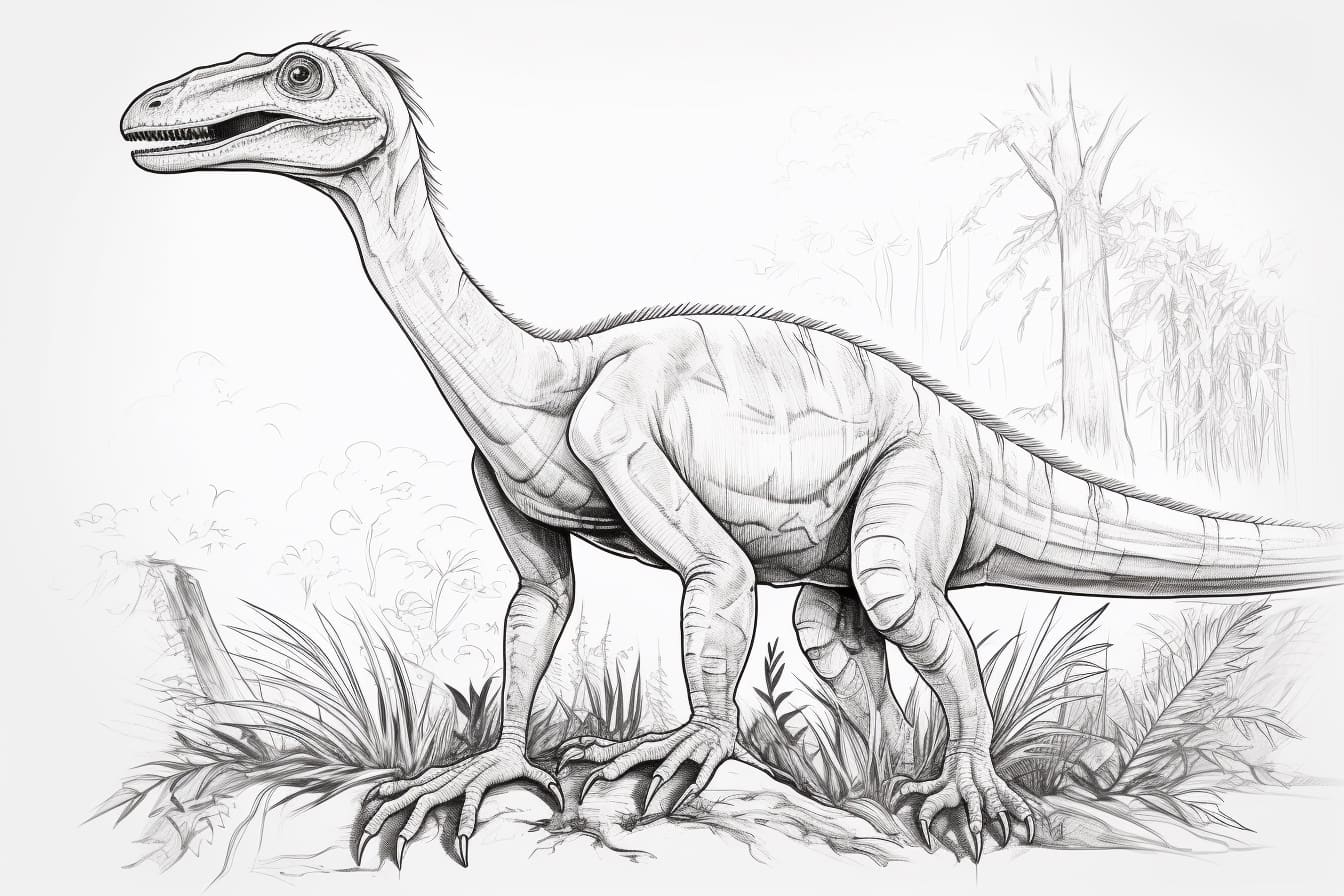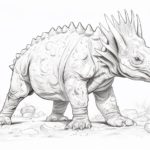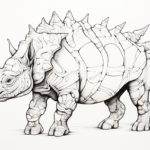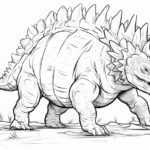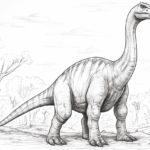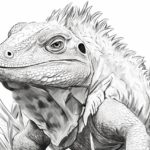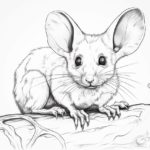The Coelophysis, a fascinating dinosaur from the Late Triassic period, is a captivating subject for artists of all skill levels. With its slender body, long neck, and sharp claws, this agile predator is a favorite among paleoartists and dinosaur enthusiasts. Drawing Coelophysis offers a unique opportunity to explore the anatomy and movement of these ancient creatures while also sparking creativity and imagination. In this guide, we will delve into the key features and characteristics of Coelophysis, providing tips and techniques to help you bring this extraordinary dinosaur to life on paper. So grab your pencils, and let’s embark on a journey to the prehistoric world of the Coelophysis!
Materials Required
To draw a Coelophysis, a dinosaur from the late Triassic period, you will need the following materials:
- Pencil: To sketch out the basic shapes and details of the Coelophysis.
- Eraser: To correct any mistakes or make adjustments to your drawing.
- Paper: A sturdy paper suitable for drawing, such as sketch paper or drawing paper.
- Reference images: Gather pictures or illustrations of Coelophysis to use as a reference for accurate details.
- Colored pencils or markers (optional): If you want to add color to your drawing, you can use colored pencils or markers to bring your Coelophysis to life.
- Fine-tip black pen (optional): You can
How to Draw a Coelophysis: a Step-by-step Guide
Step 1: Gather Your Materials
Start by gathering all the necessary materials for drawing a Coelophysis. You will need a pencil, eraser, drawing paper, and reference images of Coelophysis for accuracy.
Step 2: Sketch the Basic Shape
Begin by lightly sketching the basic shapes that make up the body of the Coelophysis. Start with an oval for the head, a larger oval for the body, and smaller ovals for the limbs. Use simple shapes to establish the overall proportions.
Step 3: Add Details to the Head
Refine the oval shape of the head by adding details such as the eye socket, nostril, and jawline. Coelophysis had a long, narrow skull with sharp teeth, so pay attention to these features while drawing.
Step 4: Outline the Body and Limbs
Outline the body and limbs based on the basic shapes you sketched earlier. Coelophysis had a slender body with long, thin limbs. Add details like the spine, ribs, and joints to make the drawing more realistic.
Step 5: Draw the Tail
Extend the body outline to create the tail of the Coelophysis. The tail should be long and tapering, with bony projections along the top. Pay attention to the curvature and proportions of the tail to capture the dinosaur’s unique anatomy.
Step 6: Refine the Details
Add more details to your drawing, such as scales, claws, and muscle definition. Coelophysis had a rough, scaly skin texture, so use short, overlapping lines to create this effect. Add claws to the feet and hands for a more lifelike appearance.
Step 7: Erase Guidelines
Go over your drawing and erase any remaining guidelines and construction lines. Use a soft eraser to gently remove any unwanted marks while preserving the final image of the Coelophysis.
Step 8: Final Touches
Add shading and texture to your drawing to enhance depth and realism. Use hatching and cross-hatching techniques to create shadows and highlights. Pay attention to light sources to make the drawing more dynamic and three-dimensional.
Step 9: Review and Refine
Take a step back and review your drawing of the Coelophysis. Make any necessary adjustments to proportions, details, or shading to ensure accuracy and realism. Don’t be afraid to experiment and refine your drawing until you are satisfied with the result.
Step 10: Sign and Date
Once you are happy with your drawing, sign and date it in the corner to mark your work. Congratulations on completing your drawing of a Coelophysis!
Conclusion
In conclusion, drawing a Coelophysis can be a fascinating and rewarding artistic challenge. By following the step-by-step instructions outlined in this article, artists can bring this prehistoric creature to life on paper or canvas. Remember to pay attention to details such as proportions, anatomy, and texture to accurately capture the essence of the Coelophysis. With practice and patience, artists can hone their skills and create stunning illustrations of this ancient dinosaur. Keep exploring and experimenting with different techniques to enhance your drawing abilities and create dynamic and realistic depictions of the Coelophysis.
Fun Facts About Coelophyses
- Coelophysis was a small, agile dinosaur that lived during the Late Triassic period, around 200 million years ago.
- It is believed to have been a fast and efficient predator, with sharp teeth and claws for hunting small prey.
- Coelophysis is one of the earliest known dinosaurs to exhibit cannibalistic behavior, as fossil evidence suggests that they may have occasionally fed on other members of their own species.
- Fossilized footprints of Coelophysis have been discovered in large trackways, providing evidence of their social behavior and possible pack hunting tendencies.
- Coelophysis is one of the most well-studied early dinosaurs, with numerous fossils found in the southwestern United States, particularly in New Mexico and Arizona.
- Studies of Coelophysis fossils have provided valuable insights into dinosaur evolution, behavior, and ecology during the Triassic period.
- Coelophysis is considered a basal theropod dinosaur, meaning it is an early ancestor of later theropods such as Tyrannosaurus rex and Velociraptor.
- The name Coelophysis means “hollow form,” referring to the hollow bones that helped make it lightweight and agile.
- Coelophysis is known for its slender body, long tail, and three-fingered hands with sharp claws, typical of theropod dinosaurs.
- Coelophysis is a popular dinosaur in paleontological research and education, often featured in museum exhibits and media portrayals of the Mesozoic era.
Suggestions for Scenes and Settings for Coelophysis Drawings
Absolutely! Here are some specific suggestions for scenes and settings for drawings featuring Coelophysis:
- Prehistoric Forest: Place Coelophysis in a dense, lush prehistoric forest with towering ferns and ancient trees. Add in other dinosaurs like Stegosaurus and Triceratops to create a dynamic and realistic prehistoric ecosystem.
- Riverbank Hunting: Illustrate Coelophysis stalking along the riverbank, ready to catch fish or hunt for small prey. You can include details like rocks, water ripples, and a variety of plants to make the scene come to life.
- Nesting Grounds: Show a group of Coelophysis guarding their nesting grounds, with eggs scattered around and hatchlings peeking out from under their watchful eyes. This scene can capture the nurturing side of these ancient creatures.
- Desert Oasis: Place Coelophysis in a desert oasis setting, with palm trees, a watering hole, and other desert creatures like pterosaurs flying overhead. The contrast between the arid desert landscape and the lush oasis can create a visually striking composition.
- Volcanic Landscape: Set Coelophysis against a backdrop of an erupting volcano, with ash clouds billowing in the sky and lava flowing down the mountainside. This dramatic setting can showcase the resilience of Coelophysis in the face of natural disasters.
- Dusk in the Mountains: Capture Coelophysis silhouetted against a colorful sunset in a mountainous terrain, with rugged cliffs and pine forests in the background. The warm hues of the setting sun can add a sense of warmth and tranquility to the scene.
- Cavern Exploration: Illustrate Coelophysis navigating through a dark and mysterious cavern, with stalactites hanging from the ceiling and glowing bioluminescent fungi lighting their path. This scene can evoke a sense of adventure and discovery.
I hope these suggestions inspire you to create some captivating drawings featuring Coelophysis in various intriguing settings!

